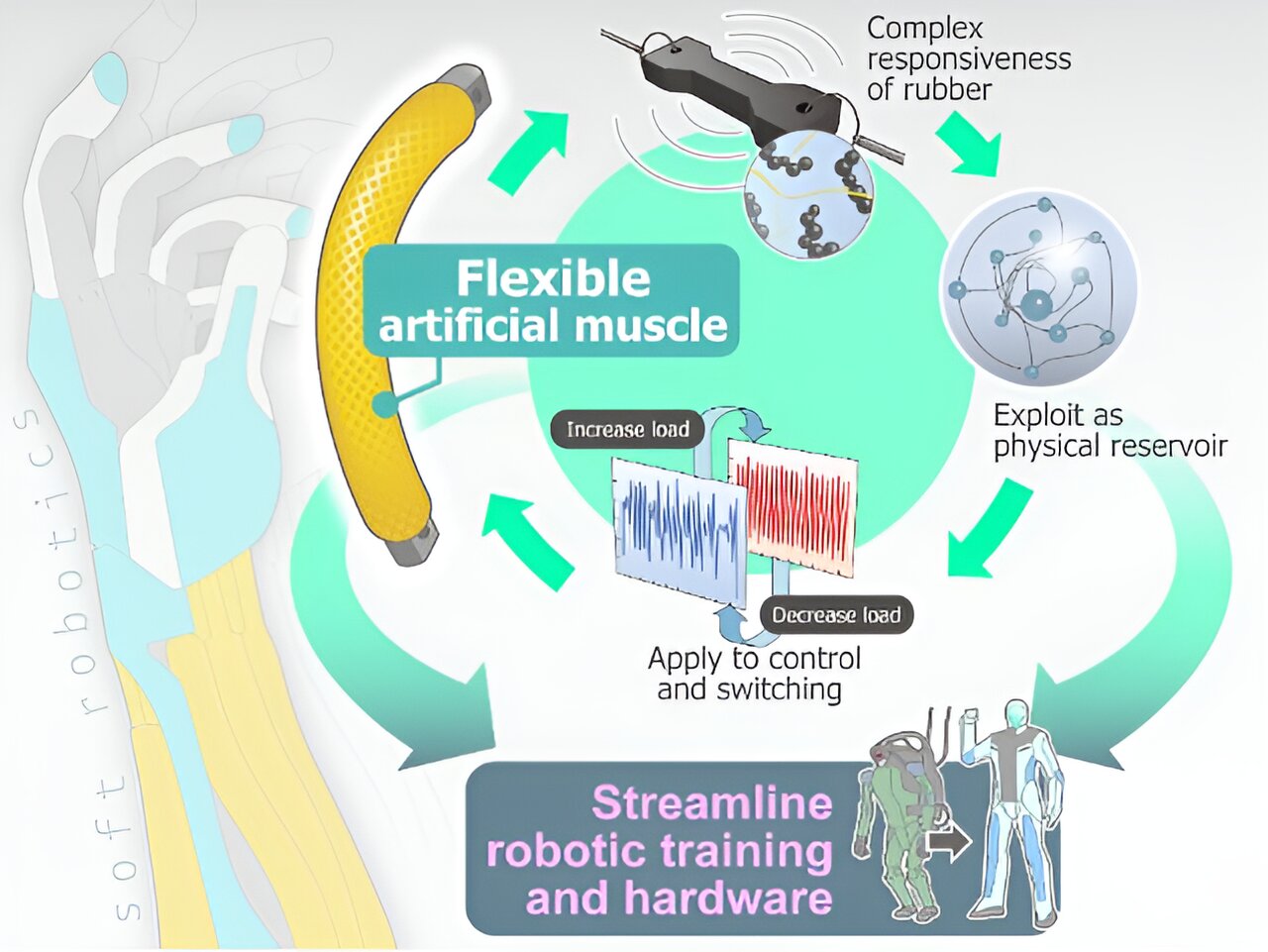× close
Creating robots to safely aid disaster victims is one challenge; executing flexible robot control that takes advantage of the material’s softness is another. The use of pliable soft materials to collaborate with humans and work in disaster areas has drawn much recent attention. However, controlling soft dynamics for practical applications has remained a significant challenge.
In collaboration with the University of Tokyo and Bridgestone Corporation, Kyoto University has now developed a method to control pneumatic artificial muscles, which are soft robotic actuators. The rich dynamics of these drive components can be exploited as a computational resource. The work is published in the journal Advanced Science.
“We’ve demonstrated the actuator’s capability to autonomously generate diverse dynamics, including rhythmic patterns and chaos,” explains Nozomi Akashi of KyotoU’s Graduate School of Informatics.
Traditionally, patterns were generated by externally attaching oscillators to robots, enabling locomotion and repetitive motions. However, these oscillators should be removed from the robot to retain their softness. Akashi’s team addresses this difficult issue to bring out the soft robots’ potential.
“In addition, the pattern-changing bifurcation structures can be embedded into the robotic actuator itself,” says Kohei Nakajima of the University of Tokyo’s Graduate School of Information Science and Technology.
The findings suggest that robots can generate qualitatively different patterns outside the learning data, paving the way for the development of robots capable of more adaptable and flexible movements.
“This could streamline the hardware and software development process, making it more efficient and effective,” concludes Akashi.
More information:
Nozomi Akashi et al, Embedding Bifurcations into Pneumatic Artificial Muscle, Advanced Science (2024). DOI: 10.1002/advs.202304402

Wanda Parisien is a computing expert who navigates the vast landscape of hardware and software. With a focus on computer technology, software development, and industry trends, Wanda delivers informative content, tutorials, and analyses to keep readers updated on the latest in the world of computing.


